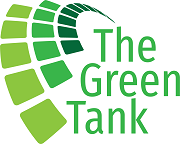- RECs, CECs and Energy Communities under Law no. 4513/2018 can be included in: the development law as a distinct form of cooperative organization; the Law on Social Cooperative Enterprises; as well as in other programs funded by national or European resources, in accordance with state aid rules.
- The Ministry of Environment and Energy may use EU funds and National Development Program resources to support the implementation of virtual net-metering by RECs by launching programs for the installation of their photovoltaic plants and storage systems.
- Energy Communities in the Operational Programmes 2021 – 2027: the Operational Programme “Western Greece 2021 – 2027” includes an action for Energy Communities of €17 million that will support the installation and operation of 7 RES projects of Energy Communities to meet the energy needs of Local Organizations for Land Improvement, local authorities, water supply companies and legal entities in Western Greece. Also, the Operational Programme “Ionian Islands 2021 – 2027” includes a pilot action of €850,000 aimed at establishing Energy Communities in the Region of Ionian Islands.
- The Sectoral Programme Environment and Climate Change 2021 – 2027 mentions the support of actions to develop RES projects by Energy Communities, mainly in islands, mountainous and remote areas, but no action has been taken.
- Bank loans constitute another source of funding for Energy Community projects. However, they are extremely difficult or even impossible to obtain for virtual net-metering projects; therefore, local communities that depend on these resources to support their projects are typically deprived of this possibility.
- To date, no distinct funding instrument exists for Energy Communities, such as a development fund.
Lignite Regions
| Financing of energy communities in the lignite regions | |||
|---|---|---|---|
| Source | Period | Amount (mil. €) |
Amount for EnCom (mil. €) |
| EU ETS auctioning revenue | 2018 | 31,41 | 3,06 |
| 2019 | 30,57 | 0 | |
| 2020 | 5,07 | - | |
| 2021 | 45,66 | - | |
| 2022 | 14,96 | - | |
| 2023 | 16,49 | - | |
| Subtotal | 2018-2023 | 144,16 | 3,06 |
| Just Development Transition Program | 2021 - 2027 | 1406,89 | 102,11 |
| Available | 26,85 | ||
| Total resources | 1551,05 | 105,17 | |
Especially in the lignite regions, Energy Communities have access to additional national and European resources in the context of the Just Transition.
EU ETS auctioning revenues: public revenue obtained from the auctioning of the emission allowances distributed to Greece from the EU Emissions Trading System is directed to lignite regions via the Green Fund in order to shift the regional economies towards sustainable economic activities.
Just Development Transition Program (PDAM) 2021 – 2027: European resources channeled via the European Just Transition Fund (JTF). The beneficiaries of the program include Energy Communities with regard to projects involving energy efficiency; self-production from RES; the installation of heat pumps for heating/cooling; the construction of residual biomass plants; and the construction of small biogas plants utilizing livestock and agricultural residues.


